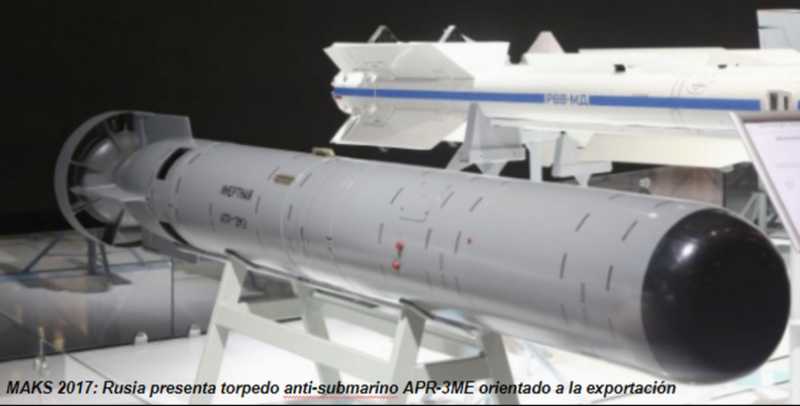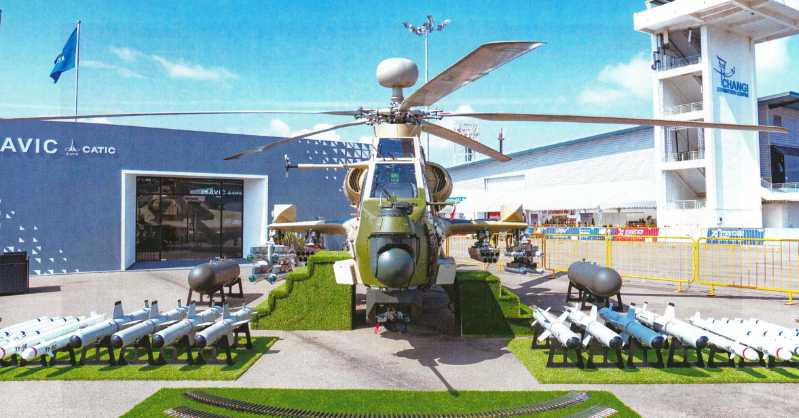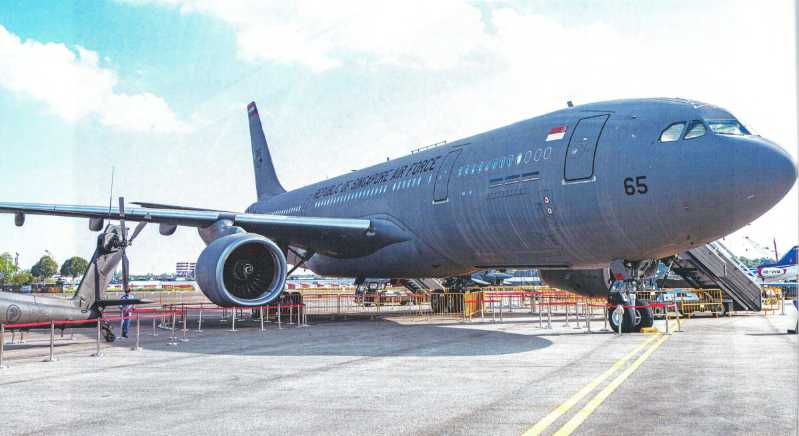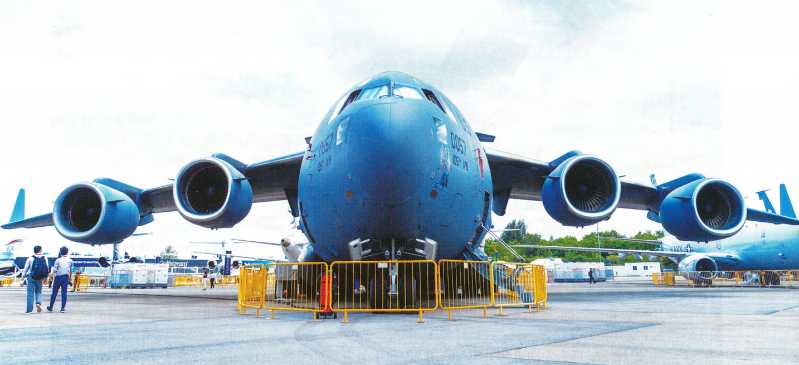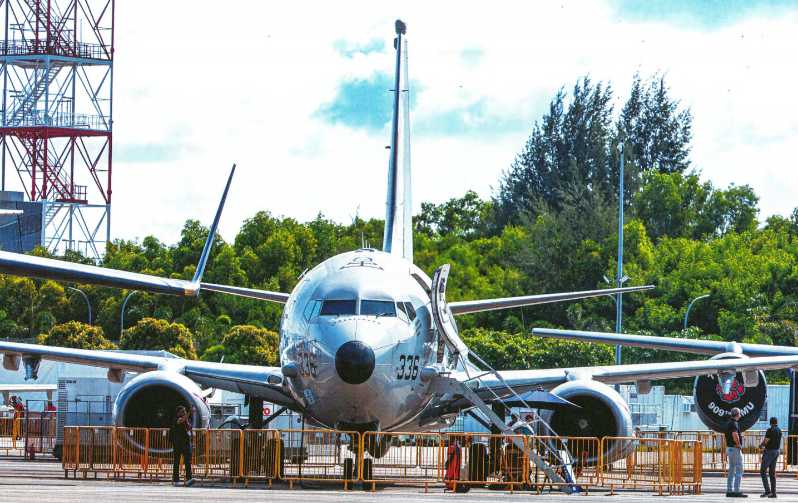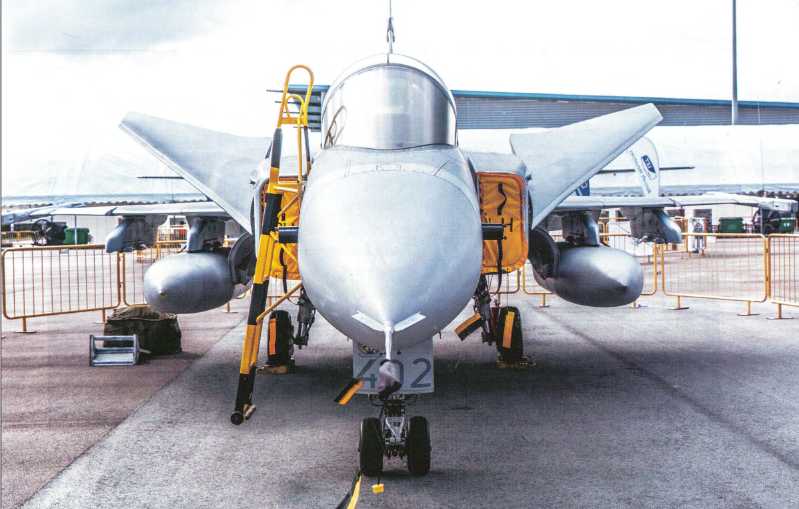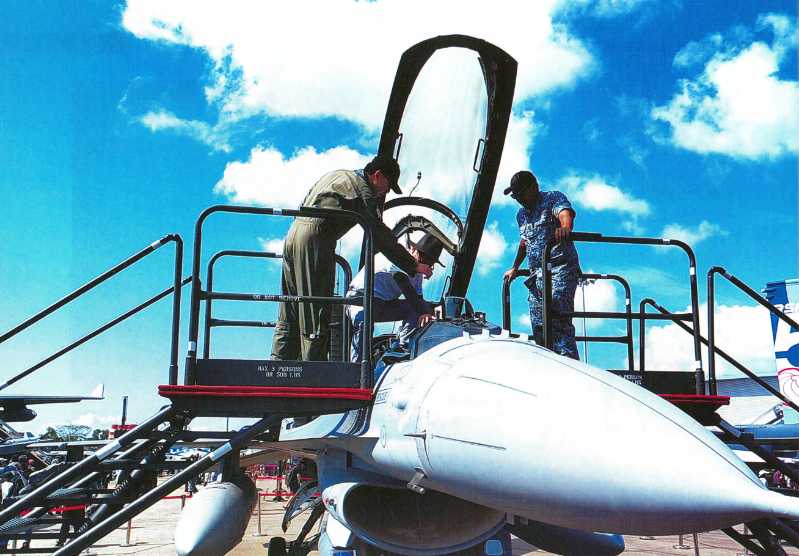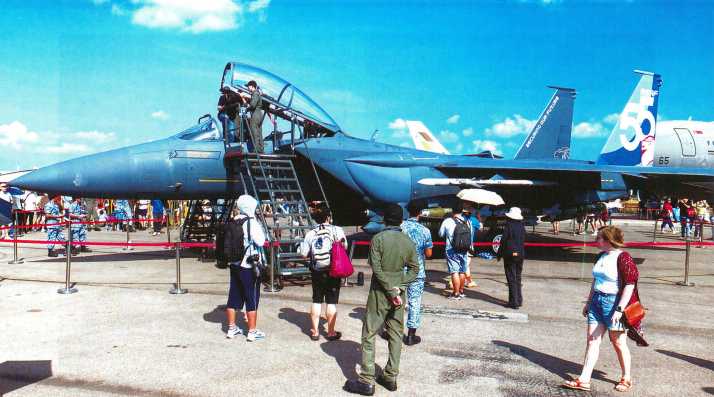In June 2021, with the first batch of APR-3ME "Vulture" fourth-generation aviation anti-submarine missiles officially serving in the Russian Navy’s anti-submarine aviation, the secretive aviation anti-submarine star-the Raptor family, finally surfaced and became a hot spot for military fans at home and abroad in Russia.
The first generation-"Vulture"
In the late 1950s, with the increase in the underwater speed of submarines, the Soviet Union began to develop the first generation of aviation anti-submarine missiles. In order to destroy enemy submarines, it became a top priority to increase the underwater speed of missiles. Through the initial test, it was surprisingly discovered that with the increase in the speed of the missile, the missile engine made a lot of noise underwater. After the missile entered the water, the harsh sound of the engine was immediately discovered by the enemy’s underwater submarine.
In August 1958, the First Research Institute of the Ministry of Defense Industry of the Soviet Union decided to develop a GSK-17 special test ship to test the noise of the missile engine in Feodosia in the Black Sea. The test results show that the noise mainly comes from the jet of the engine nozzle, and the rest comes from the gas steam vortex formed after the jet is ejected. At the same time, the test also found effective measures to reduce the underwater noise of the engine.
In 1960, the Soviet government issued Order No. 1111/463, requiring the 47th State Joint Design Bureau ("Basalt" Scientific Production Enterprise) to develop the first generation of aviation anti-submarine missiles to equip the Soviet Navy Aviation Tu-142 and Il-38 anti-submarine aircraft. In response, the Soviet government specially transferred more than 200 experts from the 1st Research Institute of the Defense Industry to the 47th State Joint Design Bureau. Compared with traditional torpedoes, the time for aviation anti-submarine missiles to destroy enemy port boats is greatly shortened due to the installation of acoustic self-guidance systems and jet engines.
Previously, the 47th State Joint Design Bureau mainly developed aviation anti-submarine bombs, and never developed the "brain" and "central nervous system" of aviation anti-submarine missiles, namely the missile instrument compartment control system. At that time, the Soviet Union’s 173rd Central Research Institute was mainly responsible for the development of missile control systems, while the Leninist Scientific Production Joint Enterprise was mainly responsible for the development of the "Golden Eagle" search and aiming system equipped on the Tu-142 and Il-38 anti-submarine aircraft. As a result, the two enterprises took on the task of developing missile control systems and submarine search and aiming systems. In addition, the 47th State Joint Design Bureau also faced a thorny problem-lack of factory buildings. In response, the design bureau was forced to rent other factories to develop missile parts.
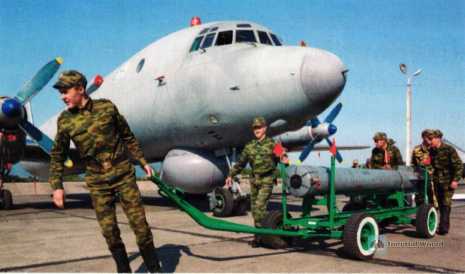
In December 1963, the 47th State Joint Design Bureau completed the draft design of the APR-1 "Vulture", the first generation of aviation anti-submarine missiles. In March 1964, the Soviet Navy approved the draft design of the "Vulture". In 1965, the "Vulture" sample was put into production at the "Tajikistan Diesel Engine" factory located in the Caspian Sea. In 1970, the "Vulture" missile passed the national test. On June 29, 1971, the "Vulture" was officially equipped with the Soviet Navy Aviation Force to attack enemy fast submarines.
The "Vulture" missile is 5.275~5.3 meters long, 0.35 meters in diameter, weighs 650~670 kilograms, uses a non-trigger fuze blasting warhead, weighs 80~83 kilograms, and the warhead explodes within 5~10 meters from the target: it uses an acoustic self-guidance system. The missile has a range of 800~900 meters and a killing depth of 40~400 meters. The missile has a speed of 57 kilometers per hour when searching for targets and a speed of 100~110 kilometers per hour when attacking targets. The missile uses a solid rocket engine, and has a 30% to 50% chance of killing enemy submarines with an underwater speed of 20 knots and a diving depth of 30 to 420 meters. It mainly uses Tu-142 and Il-38 anti-submarine aircraft as carriers.
Usually, the missile adopts two combat plans: the first is that the Tu-142 and Il-38 anti-submarine aircraft simultaneously launch two missiles from a predetermined direction to attack the target. The second is that the anti-submarine aircraft simultaneously launches three missiles from any direction to attack the target. "Vulture" searches for enemy submarines according to three programmed trajectories, namely straight line, left circular or right circular. At this time, the missile engine is not started, but relies on the spiral motion generated by the missile under the action of gravity to conduct silent search at a speed of 20 knots. When the enemy submarine is found, the engine is immediately turned on to accelerate the attack on it. Compared with torpedoes, the biggest advantage of the "Vulture" is that it can search and find targets quickly and in a short time. It relies on autonomous program self-guidance, which can effectively solve the problems of trajectory deviation and enemy interference, greatly improving the probability of missile hits. From 1965 to 1977, the "Vulture" was put into mass production at the Soviet "Region" State Scientific Production Enterprise, and a total of 263 missiles were produced.
The second generation--"Harrier"
Due to the low hit probability of the "Vulture" aviation anti-submarine missile, in the mid-1960s, the Soviet "Region" State Scientific Production Enterprise, in cooperation with the Tomsk Electric Motor Research Institute, the Leningrad "Search" Research Institute, the Petrovsky Factory Design Bureau, the Perm Kirov Scientific Production Enterprise, the Moscow "Quantum" Research Institute and the Central Automation and Hydraulic Research Institute, began to develop the APR-2 "Harrier" second-generation aviation anti-submarine missile. In 1976, the Harrier passed the national test and was officially equipped with the Russian Naval Aviation. The APR-2 Harrier consists of a warhead fairing, an instrument compartment (control and guidance system), a warhead, an engine compartment, a rudder compartment and a brake compartment. The control and guidance system consists of an inertial control system and an acoustic homing system. Due to the application of the new sonar amplitude difference direction finding technology, the combat efficiency of the target direction finding and detection system when the engine is working has been greatly improved.
The aviation anti-submarine missile is launched by the carrier aircraft in the enemy submarine activity area. Before entering the water, the missile activates the braking system and falls into the water smoothly. After entering the water: the missile sinks in a circle in the water at a small angle of 17°, and the engine is in the off state. The missile can use passive search (turn off the engine) and the maximum depth of the circular sinking is 150 meters. After finding the target, the acoustic homing system starts active search and tracks the target. At the same time, the engine is turned on and moves towards the target. At this time, since the engine noise will have a certain impact on the acoustic homing system, the inertial guidance system can be used to move towards the target direction.
The acoustic homing system uses active search, which can detect submarines within a radius of 1,500 meters and surface ships within a radius of 1,000 meters. If passive search is used, submarines and surface ships within a radius of 500 meters can be detected.
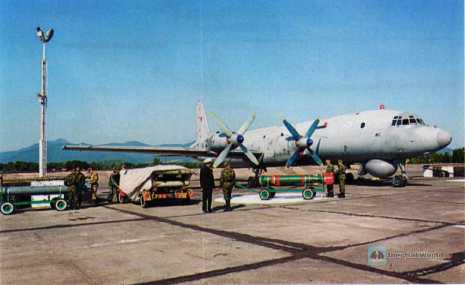
The "Harrier" aviation anti-submarine missile is 3.7 meters long, 0.35 meters in diameter, weighs 575 kilograms, and has an explosive warhead weight of 80 kilograms. The missile has a range of 2,000 meters; the missile uses a solid rocket engine, searches for targets at a speed of 80 kilometers per hour, and has a maximum speed of 110 kilometers per hour; the probability of detecting an enemy submarine with a diving depth of 600 meters and a speed of 80 kilometers per hour is 80%; the minimum altitude for aircraft bombing is 300 meters, the maximum altitude is 2,000 meters, and the maximum flight speed of the aircraft bombing does not exceed 800 kilometers per hour. The missile uses a non-trigger fuze, which automatically opens the insurance at a depth of 20 meters. The missile mainly uses Ka-28PL and Ka-27PL ship-borne anti-submarine helicopters, Mi-14PL shore-based anti-submarine helicopters, and Tu-142 and Il-38 anti-submarine aircraft as carriers.
Third generation - "Eagle"
In 1969, the Soviet "Region" State Scientific Production Enterprise, while developing the APR-2 "Harrier" second-generation aviation anti-submarine missile, also launched a plan to develop the APR-3 "Eagle" third-generation aviation anti-submarine missile. The biggest difference from the "Harrier" is that the "Eagle" is equipped with a turbojet engine. Due to the high difficulty, as well as to ensure trouble-free operation and miniaturization of the missile-borne system, the delivery date of the "Eagle" was forced to be postponed. In 1990, the "Eagle" aviation anti-submarine missile passed the national test and was officially equipped with the Soviet Navy in 1991 before the disintegration of the Soviet Union.
Compared with the Harrier, the Eagle has the following main features: First, its dimensions are smaller, its range and diving depth are increased, and the combat radius of the acoustic homing system is increased. Second, the probability of attacking targets, anti-interference capability and reliability of use are improved. In addition, the Eagle is equipped with an integrated missile-borne control system and a strapdown inertial navigation system, which expands its scope of use. The missile can be launched from Tu-142M and Il-38N anti-submarine aircraft, as well as from Ka-28PL ship-borne anti-submarine helicopters and Mi-14PL shore-based anti-submarine helicopters. At the same time, the maintenance and support procedures for missiles in peacetime and wartime are simplified.
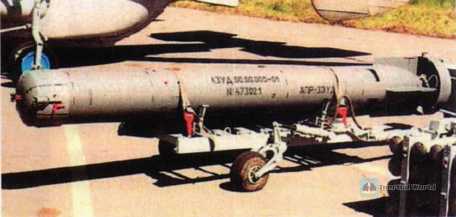
In addition, the Soviet Navy’s anti-submarine ships and attack nuclear submarines can also carry Eagle anti-submarine missiles. When launched from anti-submarine ships and attack submarines, the "Eagle" is equipped with a booster device used by the "Caliber" sea-based anti-submarine missile system, and can be launched from the "Caliber" missile launcher like the 91RTE2/91RE sea-based anti-submarine missiles. After separating from the rocket booster in the air or on the surface, the anti-submarine missile performs anti-submarine missions alone.
When receiving data transmitted by other anti-submarine aircraft or discovering enemy submarines alone, the anti-submarine aircraft is ready to perform anti-submarine missions. Usually, the anti-submarine aircraft enters the target area and transmits the data and The flight attitude parameters are input into the missile control system, and the power supply is turned on to prepare for launch. When ready, a command to launch is issued, and the missile is separated from the carrier aircraft. In the air, the missile flies at a large inclination angle and opens the parachute at a given height. Before entering the water, the brake cabin and the fairing are separated from the missile. Without starting the engine, the missile produces a spiral motion under the action of gravity and enters the water at a longitudinal inclination angle of about 15°. Based on the data of the enemy submarine initially discovered, it makes a circular navigation underwater along the longitudinal inclination angle to search for the enemy submarine. When arriving At a water depth of 20 meters, the safety is automatically turned on to ensure that the explosive device is ready for combat. When the target is found, the engine is turned on and the missile accelerates to attack the target. Even if the target is not found, the engine will be turned on to continue searching for the target. If the engine cannot be turned on, the self-destruct device is turned on.
The nose compartment fairing of the APR-3 airborne anti-submarine missile is mainly used to protect the antenna in the nose compartment before entering the water. The nose compartment is equipped with a combat positioning system consisting of a sonar and guidance system, as well as a non-trigger sensor connected to a hydrophone. The nose compartment guidance system consists of a device that automatically processes received signals.
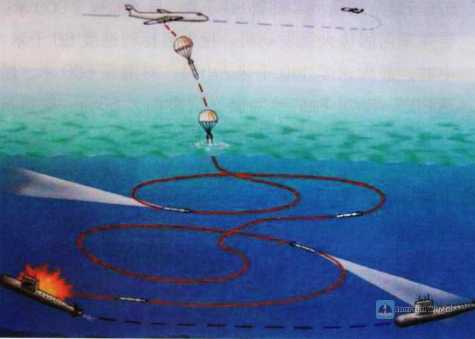
APR-3 airborne anti-submarine missile is 3.685 meters long, 0.35 meters in diameter, 525+25 kilograms in weight, 75±1 kilograms in warhead weight, 2000 meters in range, 80 kilometers per hour in search of targets, and a maximum speed of 110 km/h. The probability of detecting an enemy submarine with a speed of 80 km/h and a diving depth of 600 meters is 80%. The minimum altitude for the carrier to drop the missile is 300 meters. The missile can carry out combat missions in no more than 2 minutes. The search radius is 2000 meters and the attack radius is 1200 meters.
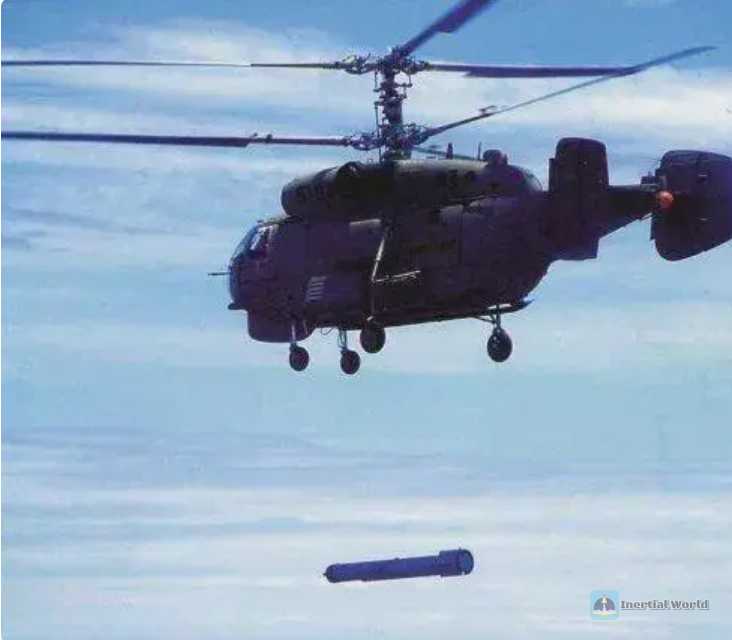
The fourth generation--"Vulture"
In May 2019, the "Region" State Scientific Production Enterprise under the Russian Tactical Missile State Corporation began to develop the APR-3ME "Vulture" fourth-generation aviation anti-submarine missile to replace the "Harrier" and "Eagle". In June 2021, the Russian Naval Aviation Force was officially equipped with the "Vulture". Compared with the second and third generation aviation anti-submarine missiles, the "Vulture" can destroy submarines of any level, including strategic missile nuclear submarines with good stealth performance and powerful weapons.
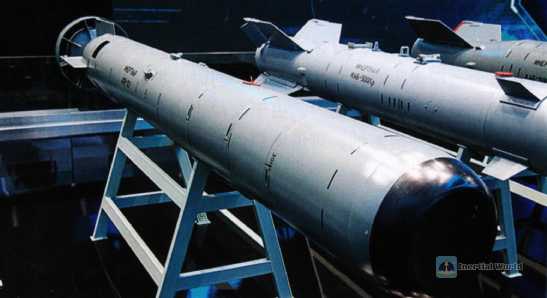
APR-3ME "Vulture" has the following characteristics. First, it is an aviation anti-submarine weapon that integrates torpedoes and missiles. After roughly determining the position of the enemy submarine, the anti-submarine aircraft or helicopter can launch the "Vulture". The missile can search for enemy submarines according to predetermined coordinates. The missile is guided by the on-board acoustic homing system and detonates the conventional warhead through a trigger or non-trigger fuze. Secondly, the "Vulture" is equipped with a turbojet engine using solid mixed fuel, which can track enemy submarines at a depth of 800 meters and a speed of 43 knots. Even if the waves are as high as level 6, the missile can be used efficiently.
Compared with the third-generation aviation anti-submarine missiles, the "Vulture" is equipped with a highly sensitive acoustic homing system with strong anti-interference capabilities. The distance for attacking stealth submarines increased from 1.5-2 km to 2.5 km, the weight decreased from 525 kg to 470 kg, and the missile length decreased from 3.658 m to 3.250 m.
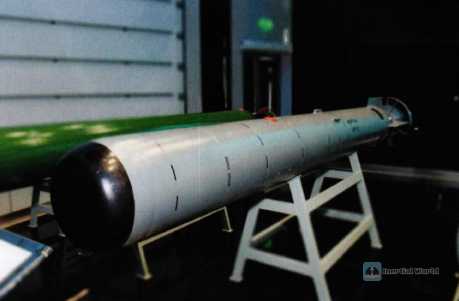
The "Vulture" aviation anti-submarine missile consists of an instrument module (head cabin: automatic control system and acoustic homing system), a combat module (combat charge, detonator and safety device), a central instrument module, a power module, a tail instrument module (steering device), a braking device (deceleration parachute), etc. The missile is equipped with an inertial control system based on an acoustic homing system and a three-degree-of-freedom gyroscope. The homing system uses a comprehensive method such as matching filtering, amplitude selection and phase differential data processing to process data to deal with underwater acoustic confrontation. The probability of destroying enemy submarines is as high as 92%.
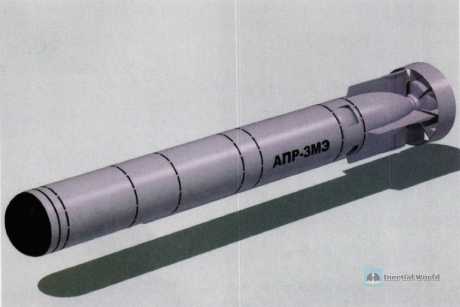
The Ka-27PL ship-borne anti-submarine helicopter carried the "Vulture" missile for the first test. The Ka-27PL used a sonar buoy to detect an enemy submarine and then launched the missile. Subsequently, the "Vulture" missile opened a parachute to reduce the speed of entry into the water. After safely entering the water, when the water depth reached 20 meters, the fairing separated from the warhead and the acoustic homing system. Subsequently, the missile moved along a spiral trajectory. At this time, the acoustic homing system captured the sound waves from the submarine with a direction finding accuracy of 1.5°~2° to prevent the enemy submarine sonar system from discovering it. When the water depth is less than 200 meters, the missile automatically shuts down the engine for silent search. When the water depth exceeds 200 meters, the engine is restarted. At this time, the engine noise will not have a negative impact on the acoustic homing system. Once the target is found, the missile will attack the target at a speed of 130 kilometers per hour. At this time, the strapdown inertial navigation system will assist the acoustic homing system in tracking the target. The time to attack the target will not exceed 2 minutes. If no target is found, the missile will self-destruct after the fuel is exhausted. Il-38N and Tu-142M3 anti-submarine aircraft will also be equipped with "Vulture"
Boris Obsonov of the Russian Tactical Missile State Corporation pointed out that due to its excellent technical and tactical performance, many foreign customers have shown great interest in the APR-3ME "Vulture" aviation anti-submarine missile. At the same time, all the parts of the "Vulture" missile are domestically produced and do not need to be imported from abroad.

Russian military expert Kirill Lyabov pointed out that despite the characteristics of being able to be carried by various aircraft, high speed, precision guidance and turbojet engines, except for a certain country in East Asia that is interested in the "Vulture" aviation anti-submarine missile, most countries are still fond of traditional electric torpedoes and thermal power torpedoes. The reason is very simple. First, the performance of the "Vulture" is comparable to that of the new electric torpedoes and thermal torpedoes. Second, the turbojet engine installed on the "Vulture" makes foreign customers lose their sense of security.
In short, with the introduction of the APR-3 ME "Vulture" aviation anti-submarine missile, the anti-submarine combat capability of the Russian naval aviation will be greatly improved. At the same time, the export of this type of anti-submarine missile will not only expand Russia’s influence in the international arms market, but also add more dividends to Russia’s arms exports.


